Cambridgeshire church plague graffiti reveals 'heartbreaking' find
- Published
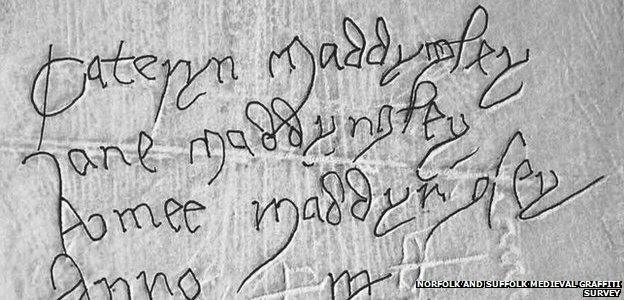
The graffiti image has been "re-worked" to highlight the writing, otherwise it is near-invisible to the eye
"Heartbreaking" graffiti uncovered in a Cambridgeshire church has revealed how three sisters from one family died in a plague outbreak in 1515.
The names Cateryn, Jane and Amee Maddyngley and the date were inscribed on stonework in Kingston parish church.
It was found by Norfolk and Suffolk Medieval Graffiti Survey volunteers.
Archaeologist Matt Champion said the project had shown church plague graffiti was "far more common than previously realised".
"The most heartbreaking inscriptions are those that refer to long-dead children," he said.
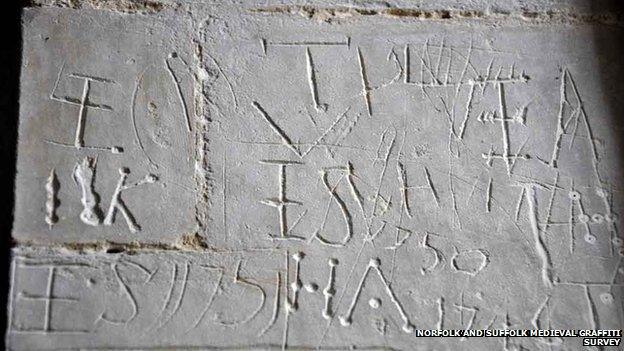
Matt Champion said church monuments memorialise the elite while graffiti remembers the "common voice"
The Maddyngley graffiti is hidden under limewash near the door in All Saints' and St Andrew's church, external.
The family lived in Kingston, seven miles from Cambridge, and were tenant farmers who "rarely turn up in parish records", he said.
Mr Champion believes Cateryn, Jane and Amee must have been children because their names are not found as adults in any of the records.
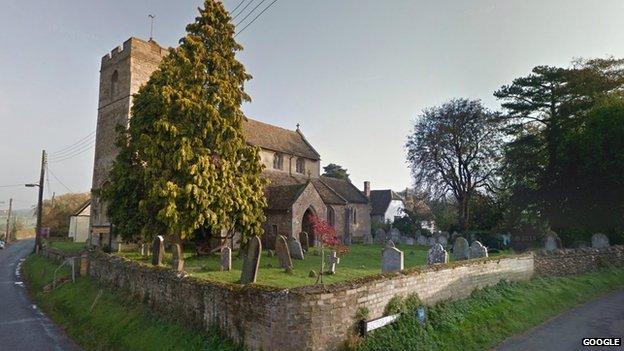
Records reveal the Maddyngleys had lived in Kingston since at least 1279
In 1515, there was an outbreak of bubonic plague in London which spread across south east England.
Mr Champion said Cambridge University suspended its classes and large gatherings of people were banned, "just as we see today with the Ebola outbreaks in Africa".
Children were particularly hard-hit and usually hastily buried in unmarked graves.
The graffiti survey was set up in 2010 and is the first attempt to survey pre-Reformation graffiti in churches since the late 1960s.
Volunteers use digital cameras and powerful lamps to reveal previously hidden or faded markings.
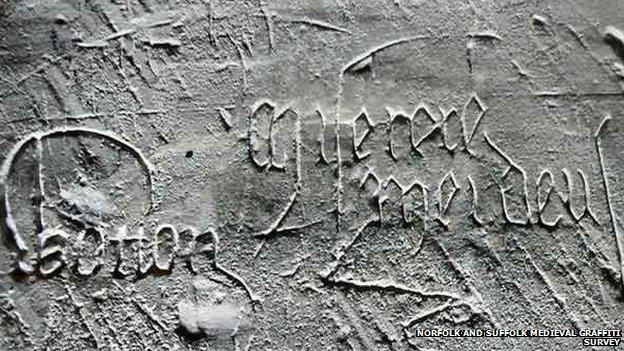
Plague graffiti in another Cambridgeshire church. The project hopes to survey more of the county's churches
At least 60% of the 650 churches surveyed in Norfolk, Suffolk and north Essex have "significant amounts" of graffiti and volunteers have recorded up to 500 pieces in many of them.
The project has confirmed more graffiti is found to have been created during times of pestilence such as the Black Death of 1349 and subsequent outbreaks of plagues.
"It was a votive offering at a time where prayer counted," Mr Champion said.
- Published20 July 2014
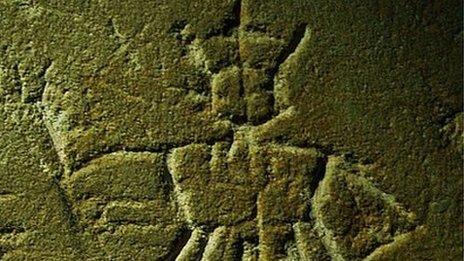
- Published31 March 2014
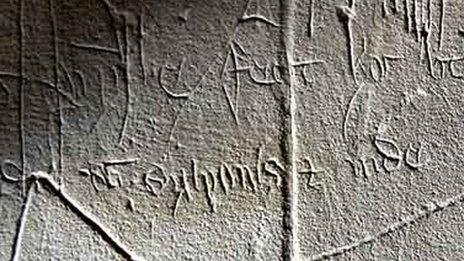
- Published7 January 2013
